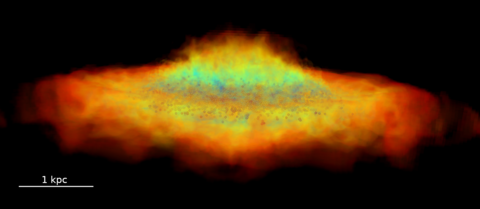LATEST RESEARCH RESULTS
Find out about the latest simulation projects run on the GCS supercomputers. For a complete overview of research projects, sorted by scientific fields, please choose from the list in the right column.
Astrophysics
Life Sciences
Life Sciences
Artificial Intelligence and Machine Learning
Life Sciences
Life Sciences
Astrophysics
Environment and Energy
For a complete list of projects run on GCS systems, go to top of page and select the scientific domain of interest in the right column.

















